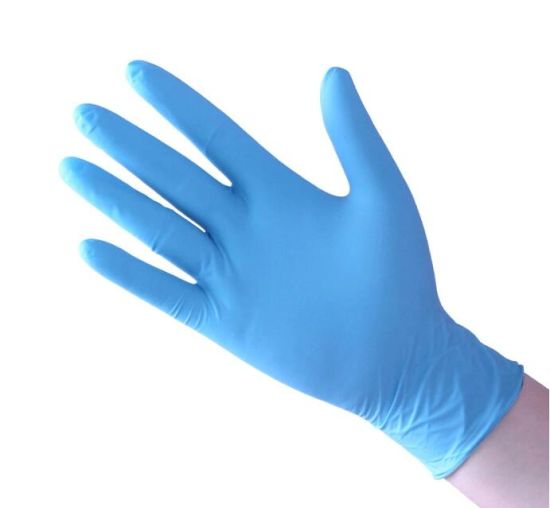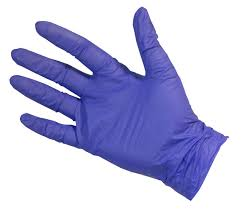2021/05/30 / By hqt / Tags:
How does nitrile glove save you from 3 fatal risks?
How work gloves help to save your hands from hazard?

The hands are the part most exposed to risks in the workplace. Knowing the risks and the rules leads to choosing the most suitable work nitrile gloves for you. In all work environments we are subject to the risk of small or large accidents involving the hands.
From the office, to the workshop, from the steel plant to the analysis laboratory, the hands are the most used tool in the workplace, thus becoming the part most exposed to injuries in our body. It is estimated that 60% of workplace accidents affect the upper limbs.
What are the risks at work?
When we talk about risk, we remember that we mean any situation that can cause any type of damage to the health of the individual. When the RSPP (company safety manager) has to choose which work gloves to buy, he must consider risk as a starting point for safety assessments.
The risk, in fact, is the fundamental tool that allows the employer to identify the prevention and protection measures.
What risks are there in the workplace for the hands?
There are different types of risks to which hands can be subjected at work. Categorizing them was a way to be able to respond promptly to every need, also from the point of view of the relative reference standard.
Check out the different categories of risk!
Risk assessment is classified into the following 3 categories:
- Category I ^: minimal risks. Protective nitrile glovesfor this category are those related to jobs that do not involve particularly serious risks. The uses can be, for example, hobby and gardening.
- Category 2 ^: medium risks. By medium risk we mean that of industrial works in general that do not foresee fatal or permanent damage to health.
- Category 3 ^: fatal or irreversible risks. Generally linked to the chemical industry work environments, to the great dangers of cutting, to the heat of the fire, all situations with a high risk of irreparable damage.
A pictogram is linked to each type of risk, that is an easily recognizable symbol that must be shown on the glove. A series of numbers is added to the pictogram (s) that identify the levels of performance/protection.
This corresponds to a number indicating a particular category or scale according to which test results are graded. In most cases, these results fall within a scale of values set at 5 levels (0 - 5), where the performance level increases as the number increases.
At 5 the performance level for that parameter is maximum.
The pictograms on work nitrile gloves: how to read them?
By law, nitrile gloves must be labeled.
The label shows:
- the pictograms, i.e., the indication of the risks from which the gloves protect,
- the corresponding EC legislation to which they comply,
- performance levels,
- the CE mark,
- the size,
- Moreover, the name or commercial code of the glove,
- any expiration date (for dielectric gloves).
The image below shows the pictograms used for the nitrile work gloves and the corresponding specific regulations.
Are there the right work gloves for every risk?
Due to the high degree of exposure of the hands to various types of risks, there are many types of gloves. The materials with which they can be made, for example, are:
- latex
- rubber
- polyurethane
- steel
- nitrile
- skin
- Kevlar
- PVC
Latex gloves:
They are gloves with a high level of comfort, they adhere well to the skin and being very thin sometimes you even forget you are wearing them, we recommend for the umpteenth time not to touch your mouth, nose and eyes even with gloves otherwise you will make them decay the purpose for which we used them.
Latex work glove
This type of glove has a latex glove inside but, on the outside, they have a reinforced surface suitable for more demanding manual jobs, you can find them in sizes S - M - L - XL.
Latex gloves for children
As with normal latex gloves, these also have a high elasticity and tensile strength.
This type of gloves is recommended for children between the ages of 4 and 10, of course you will have to instruct them and make sure that even if you wear them, they do not touch your mouth, nose or eyes.
Also teach them the right technique to take them off, by the way, we were almost forgetting to tell you that all disposable gloves are ambidextrous and you can find them in the following sizes: S - M - L.
Vinyl gloves:
They differ from latex gloves because these are produced with synthetic raw materials, are less resistant than the previous ones, are cheaper but also less resistant to tearing and perforation.
Most of the time these are chosen as an alternative to latex ones by all those people who are allergic to them.
In the case of vinyl gloves the available sizes are S - M - L - XL.
Nitrile gloves:
Nitrile gloves are ideal to use for people who have sensitive skin. Moreover, this material guarantees excellent insulation, also in this case they adhere optimally to the skin and guarantee excellent sensitivity to touch, they are hypoallergenic and you can find them in the following sizes: XS - S - M - L - XL.
When does it make sense to use disposable gloves and what benefits do, they offer?
In the food industry, wearing gloves is often mandatory, in the gastronomic sector it is not. There are conflicting opinions among cooks that working with gloves is as hygienic as working without them.
Many cooks recommend wearing gloves to protect your hands and avoid washing them too often, others don't like the feel of gloves and prefer to work with your bare hands. In fact, only with uncovered fingers can the cook perceive correctly by touch in order to work quickly and accurately: since the hands are the cook's tool, this is indispensable.
Let's answer the question of whether wearing gloves makes sense.
More hygienic or not?
Meanwhile, current studies show that wearing gloves (nitrile gloves) is no more hygienic than working with bare hands, provided that good hand hygiene is maintained. Often working with disposable gloves is even unsanitary, as the concept of "disposable" is not taken too seriously by many cooks.
If you wear gloves while working, you need to change them regularly, as a rule every time you do a different activity or deal with a different product, which consumes a lot of disposable gloves during the day.
So even wearing gloves does not avoid washing your hands regularly.
What are the hand hygiene fundamentals?
- Don't wear jewelry
- Keep your nails short
- Wash your hands regularly under warm running water with soap or special kitchen hand sanitizers
- After washing them, dry your hands with a disposable towel
- Regularly take care of your hands
Hand hygiene with nitrile gloves:
- Put on gloves after washing your hands
- Change gloves regularly
- Wash your hands thoroughly before changing gloves

Even when you are wearing nitrile gloves, your hands must be clean so as not to contaminate them. It is also necessary to wash your hands afterwards, in fact under the gloves the skin sweats quickly and the natural bacteria reproduce on the skin.


